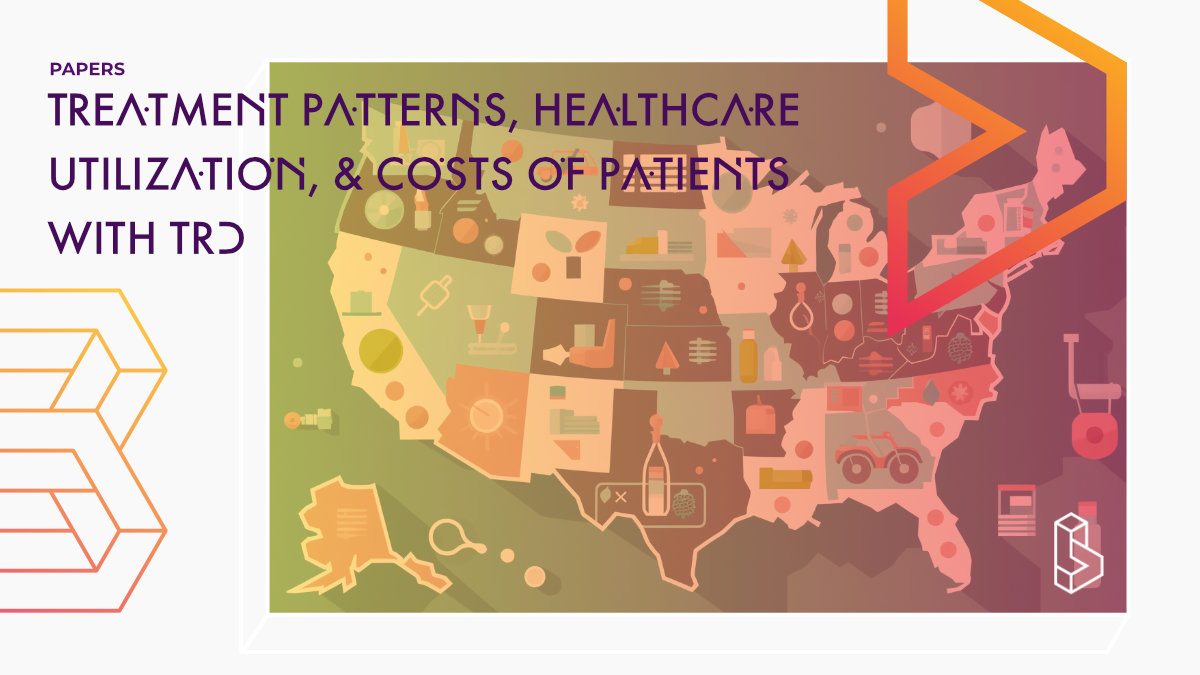This analysis of health outcomes (n=269) of those treated with esketamine for treatment-resistant depression (TRD) finds a trend (but not significant differences) towards lower healthcare costs. Dosing intervals (of ketamine) were longer than recommended on the label.
Abstract
“Aims To describe real-world use of esketamine (ESK) intranasal spray and healthcare outcomes among patients with treatment-resistant depression (TRD) in the United States (US).
Methods Adults with TRD initiated on ESK (index date) between 5 March 2019 (US approval date for TRD) and 31 October 2020 were sampled from IBM MarketScan Research Databases. TRD was defined as claims for ≥2 unique antidepressants during the same major depressive episode. Subgroups of the TRD cohort with comorbid cardiometabolic conditions, pain, anxiety disorder, and substance use disorder (SUD) were identified. Patients had ≥6 months of continuous health plan eligibility pre- and post-index.
Results The TRD cohort comprised 269 patients; comorbidity subgroups included 123 (cardiometabolic), 144 (pain), 189 (anxiety disorder), and 58 (SUD) patients. Proportion of patients completing ≥8 ESK sessions (number of sessions in induction phase) was 61.3% in the TRD cohort and ranged from 60.2% (cardiometabolic subgroup) to 72.4% (SUD subgroup) in subgroups. Median frequency of induction sessions was every 5–8 days among the TRD cohort and subgroups. Mean mental health–related inpatient costs reduced from pre- to post-index periods in the TRD cohort (mean ± standard deviation [median] costs per-patient-per-6-months: $3,480 ± $13,328 [$0] pre-ESK initiation; $3,262 ± $16,666 [$0] post-ESK initiation; mean difference: –$218) and subgroups (largest decrease in cardiometabolic subgroup: $4,864 ± $14,271 [$0]; $2,792 ± $15,757 [$0]; –$2,072). Mean mental health–related emergency department (ED) costs decreased in the TRD cohort ($608 ± $2,525 [$0]; $269 ± $1,143 [$0]; –$339) and subgroups (largest decrease in the SUD subgroup: $1,403 ± $3,752 [$0]; $351 ± $868 [$0]; –$1,052).
Limitations This is a descriptive analysis; sample size for some comorbidity subgroups is small.
Conclusions The majority of patients completed ESK induction phase, and most dosing intervals were longer than the label recommendation. In this descriptive analysis, mental health–related inpatient and ED costs trended lower post-ESK initiation.“
Authors: Kruti Joshi, Dominic Pilon, Aditi Shah, Christopher Holiday, Swapna Karkare & Maryia Zhdanava
Find this paper
https://doi.org/10.1080/13696998.2023.2188845
Open Access | Google Scholar | Backup | 🕊
Study details
Compounds studied
Ketamine
Topics studied
Economics
Treatment-Resistant Depression
Depression
Study characteristics
Observational
Participants
269
Humans

